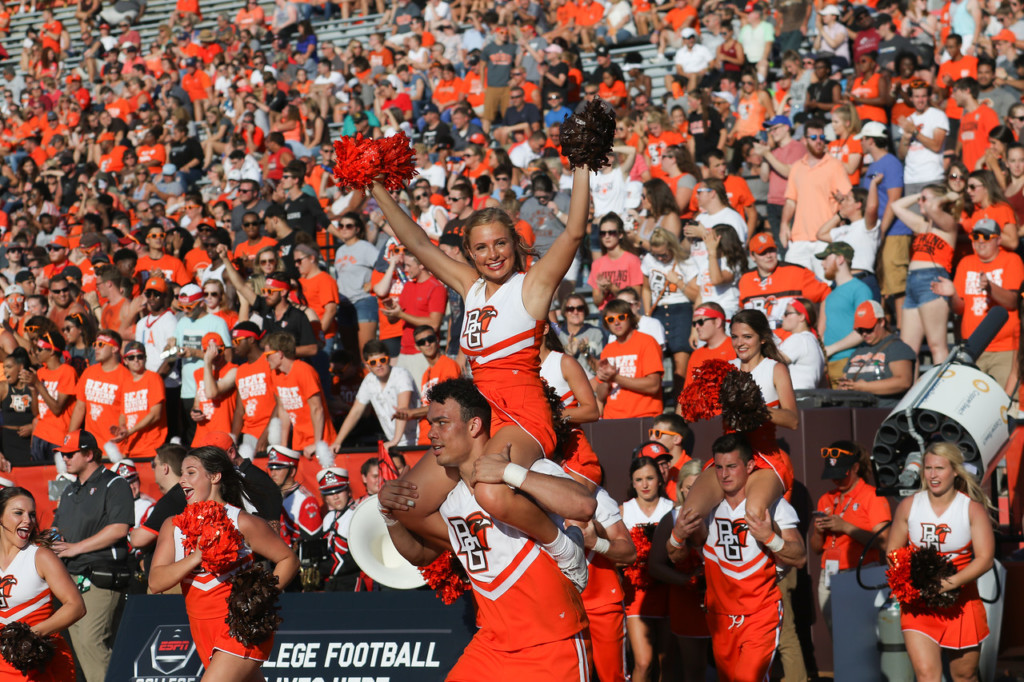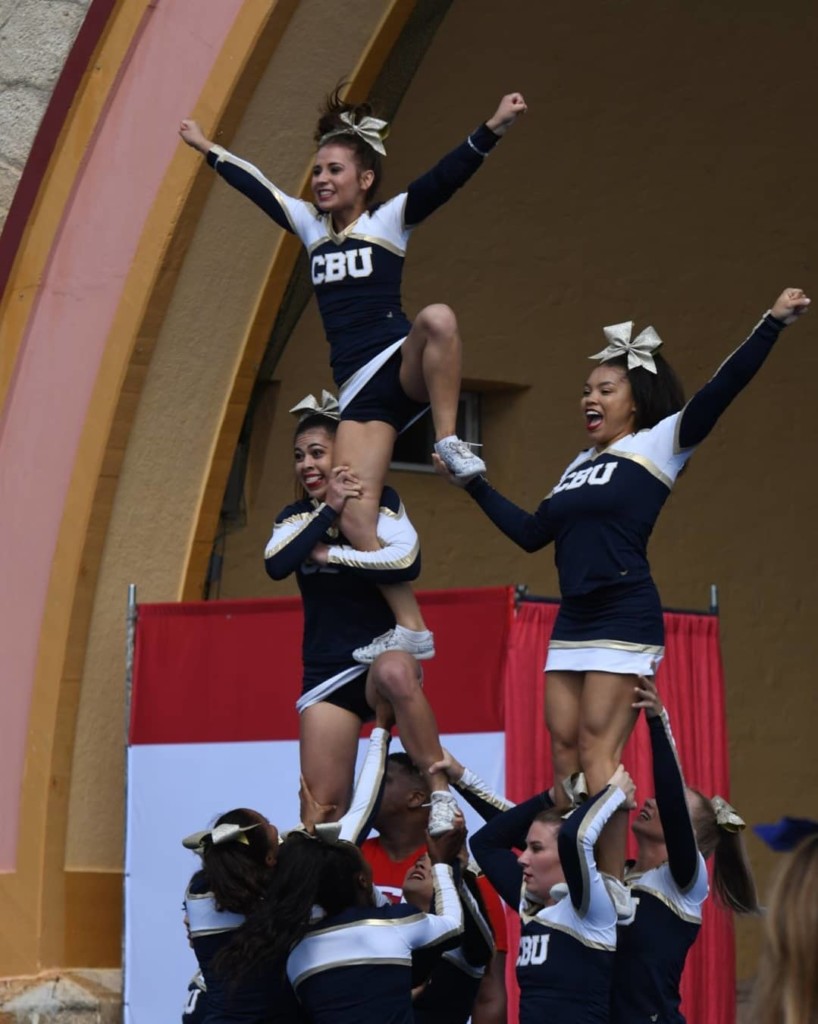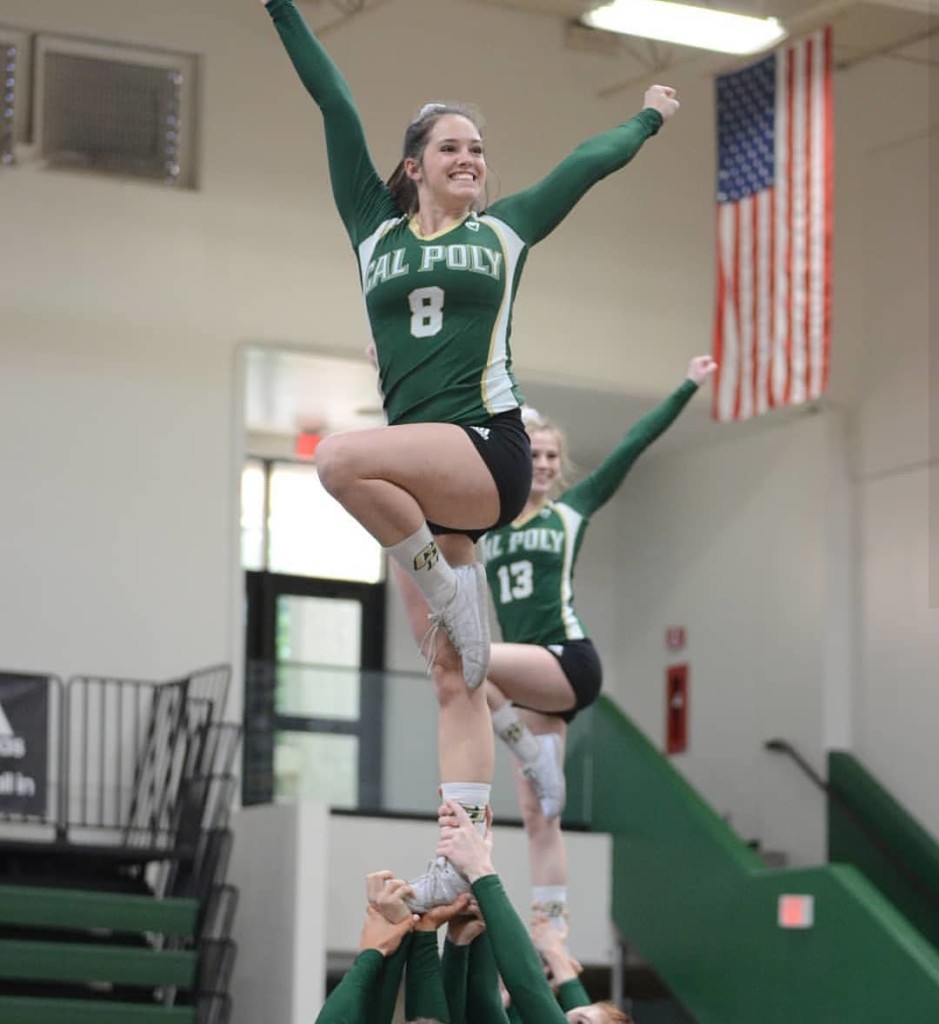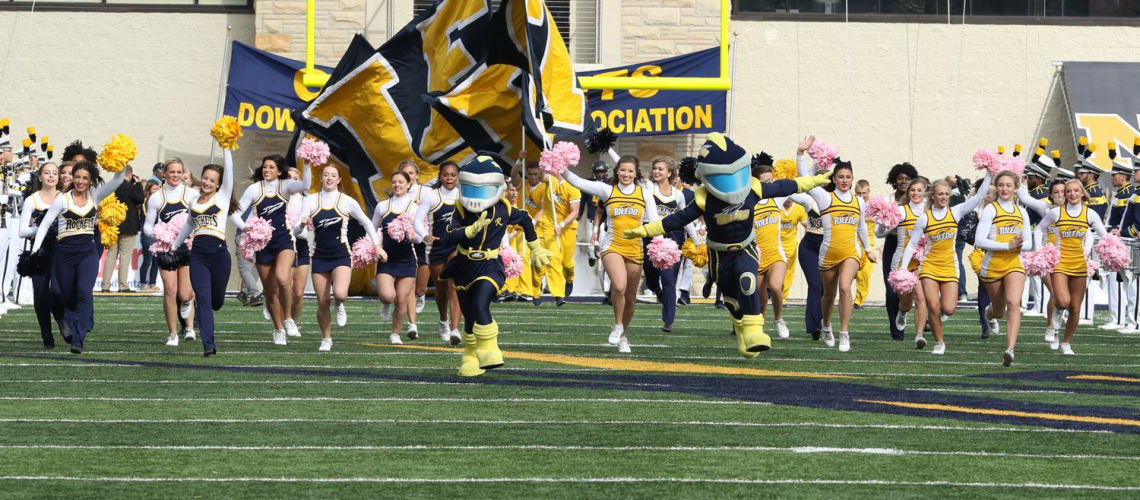In 2012, the summer before my senior year, I spent most of my free time trying to figure out which school I wanted to apply to in the fall. Before adding a college to my list, my first question was – does this school have a cheerleading team? If it didn’t, I kept it off my list. Fast forward to 2020, and the question isn’t just “does the school have a cheer team?” but now, “what kind of cheerleading do I want to do?”
Cheerleading is constantly evolving and furthering its limits, so the diversity in what different colleges have available can vary. With new branches of cheerleading emerging (like STUNT, Acrobatics & Tumbling and Game Day Competition Divisions), you may have questions like: What exactly is each one about and which one is best for me? If you’ve found yourself at New Heights Recruiting, and also at this specific blog, you may want these answers and I want to help give you the insight you need to answer them! Beware, there is a lot of content below, so feel free to skip around to the topics that most pertain to you and what you feel you want a better understanding of.
Are you looking to get recruited?
Game Day

Photo cred: @cheerdadphotography
Game day cheerleading is one of the first branches of cheer that one will find at most colleges. Similar in expectations to traditional high school cheerleading, you can find these teams typically present at their school’s football, basketball, or soccer games. The game day cheer team may even be in attendance for ice hockey, volleyball, baseball or wrestling.
These teams not only serve to perform at games but may also help with the marketing of sports teams and the game day experience. This may include greeting fans, participating in timeout sponsorship activities, having a presence in advertisements, and partaking in local outreach.
Material taught and performed will have a strong focus on cleanliness and simplicity for cheers. For all girl or small coed teams, there may be a pro cheerleading approach to halftime or timeout performances as well. Usually there will be certain, or suggested, requirements for tumbling and basic stunting knowledge when trying out too. Stunting and tumbling skills will be actively used and displayed at game day events. The primary goal of the game day cheerleader is to bring entertainment and excitement to fans.
Competition

Photo cred: @cheerdadphotography
Some colleges may have competition only teams available, and others may require you to participate on their game day team as well. The different competition teams that may be available are all-girl, small coed or large coed. Depending on the school you cheer for, you may participate in NCA, UCA, and/or USA College Nationals. These teams will typically have stricter, or higher level, skill requirements and will warrant a larger time commitment than game day cheerleading. The journey will be highly rewarding and you will push your limits even further than you may have before on any past team you’ve been on. Even if you have never competed in cheerleading before (I was one of those athletes prior to college), don’t feel that you cannot push yourself and reach the competition level if that is something you truly want to be a part of.
STUNT

Photo cred: @cheerdadphotography
Now for some of the new stuff. The highly anticipated stuff. The information you are really interested in learning more about! (Especially if there isn’t a STUNT team local to where you are now.) STUNT was formulated by USA Cheer as an opportunity to meet the strict Title IX requirements for what constitutes a sport in school athletics. In order to meet the requirements, the crowd leading aspect of traditional cheerleading was removed. Leaving only the technical and acrobatic aspects. Along with it, the traditional uniforms and props we are accustomed to seeing during games and performances have been stripped down. STUNT is a Spring exclusive sport too, whereas a competitive cheerleading team’s season can last year round.
How is STUNT the sport played?
All girl teams go head to head over the course of four quarters. During this 45-60 minute time frame, teams perform identical skills and are evaluated on who excelled in execution. The stunts performed are similar to what we are accustomed to seeing in college and high school competitive cheerleading. The main difference lies in that two teams share a mat, at all times, as they directly perform against each other in front of their own set of judges. There is a traditional four person stunt group and similar pyramid stunting to what we often see on the average college cheer team.
The four quarters of the game are broken down by:
1. Partner Stunts
2. Pyramids and Baskets
3. Jumps and Tumbling
4. Group
Premade routines are created that each team learns prior to taking the mat. These premade routines vary in difficulty from easy (routine 1) to hard (routine 6). There are 6 different routines for each of the first three quarters – equaling a total of 18 routines. At the conclusion of each routine, the winning team earns a point and is able to choose the next routine called. Once teams reach the last quarter, they then perform all of the routines of that level, side by side, at the exact same time.
Emerging Sport Status
Acrobatics &
Tumbling

Photo cred: @cheerdadphotography
How Acrobatics & Tumbling Differs
- Compulsory
- Acro
- Pyramids
- Toss
- Tumbling
- Team Event
Emerging Sport Status
Which one
is right for me?
If you have that competitive spirit and consider yourself a great performer, but lack the higher level skills typically required for competitive teams, you may look into a primarily Game Day program! These programs will satisfy your performance needs through well orchestrated time out and half time routines with opportunities to compete at major collegiate championships.
Have you always wanted to compete at the historic bandshell in Daytona Beach or show off your skills at Disney World in January? Do you have previous experience competing in cheerleading already? A competition based program may be the perfect fit.
Or do you prefer the technical aspects of cheerleading the most? Does the dance and performer style portion not really interest you? Do you come from a strong gymnastics background? STUNT or Acro & Tumble may be more in line with what you enjoy most about cheerleading.
What I think may be helpful now, is to create a list of what you love most about cheer and what your goals are as a cheerleader. Each type of cheerleading includes its own unique and diverse elements. So honing in on what you like and desire most from cheer could lead you to discovering that one specific branch sticks out to you more than the rest. I hope that you’ve found this content to be helpful! We cannot wait to continue to expand upon what we can offer you as athletes. Our goal is to give you as much insight as possible as you begin your journey toward your future college cheerleading team. Keep an eye out for future posts, where we will discuss each style of cheer in more depth.
Until next time!

